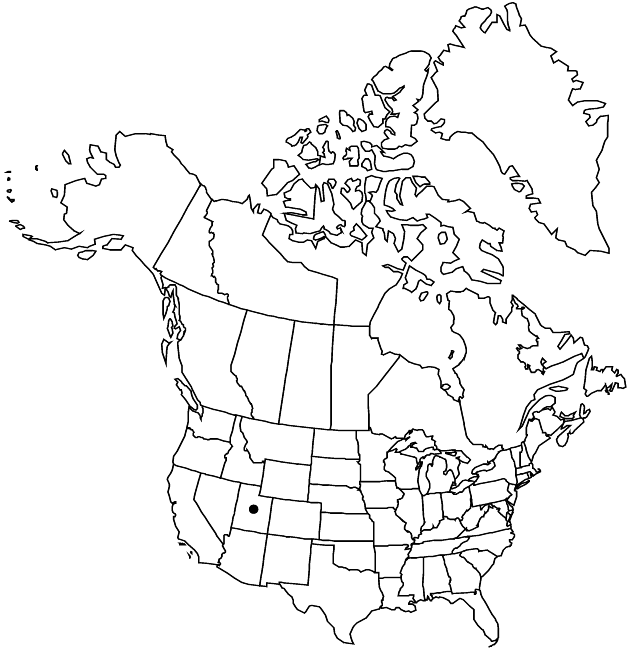Ericameria nauseosa var. psilocarpa
Phytologia 75: 87. 1993.
Plants 30–50 cm. Stems yellowish green, leafy, compactly tomentose. Leaves yellowish green; blades 1-nerved, narrowly oblanceolate, 30–70 × 1–2 mm, faces glabrate. Involucres 8.5–12.2 mm. Phyllaries 15–18, apices erect, acute or acuminate to cuspidate, abaxial faces glabrous. Corollas 8.6–9.6 mm, tubes sparsely hairy, lobes 1.3–1.5 mm, glabrous; style appendages slightly longer than stigmatic portions. Cypselae glabrous; pappi 6.8–9.1 mm. 2n = 18.
Phenology: Flowering later summer–fall.
Habitat: Sagebrush and Elymus salinus communities
Elevation: 1900–2300 m
Discussion
Of conservation concern.
Variety psilocarpa is apparently restricted to Carbon, Duchesne, Emery, and Wasatch counties in east-central Utah.
L. C. Anderson (1986b) excluded the name Ericameria nauseosa var. glareosa (M. E. Jones) G. L. Nesom & G. I. Baird [as Chrysothamnus nauseosus subsp. glareosus (M. E. Jones) H. M. Hall & Clements], because he had seen no herbarium or field material. Jones’s original description is sketchy; he mentioned its similarity to subsp. leiosperma. S. L. Welsh et al. (1987) noted the uncertain disposition of this taxon. A. Cronquist (1994) recognized C. nauseosus var. glareosus (M. E. Jones) H. M. Hall and placed C. nauseosus var. psilocarpus in synonymy, noting that it was equal to E. nauseosa var. glareosa (M. E. Jones) G. L. Nesom & G. I. Baird. Without more substantial documentation, use of var. psilocarpa is preferred over var. glareosa, which we take to be of uncertain application.
Selected References
None.
Lower Taxa
"fine" is not a number.
